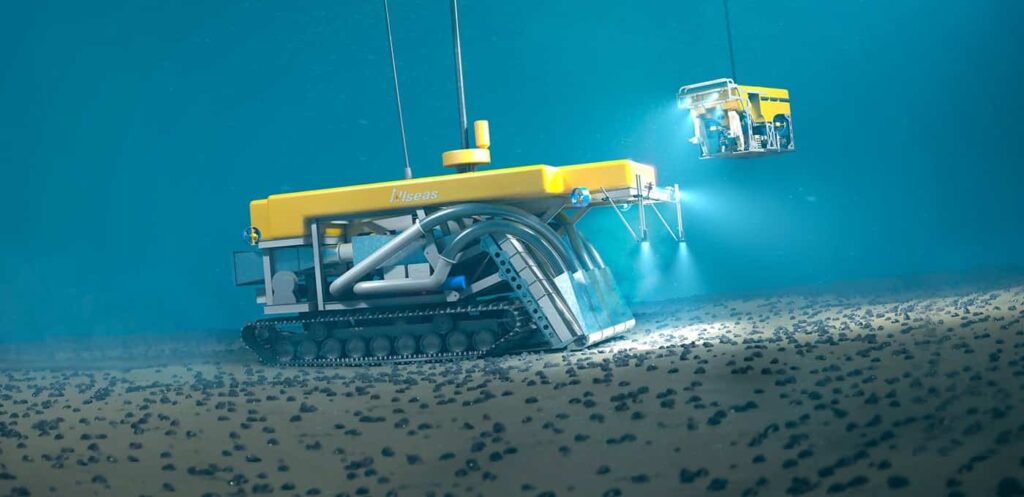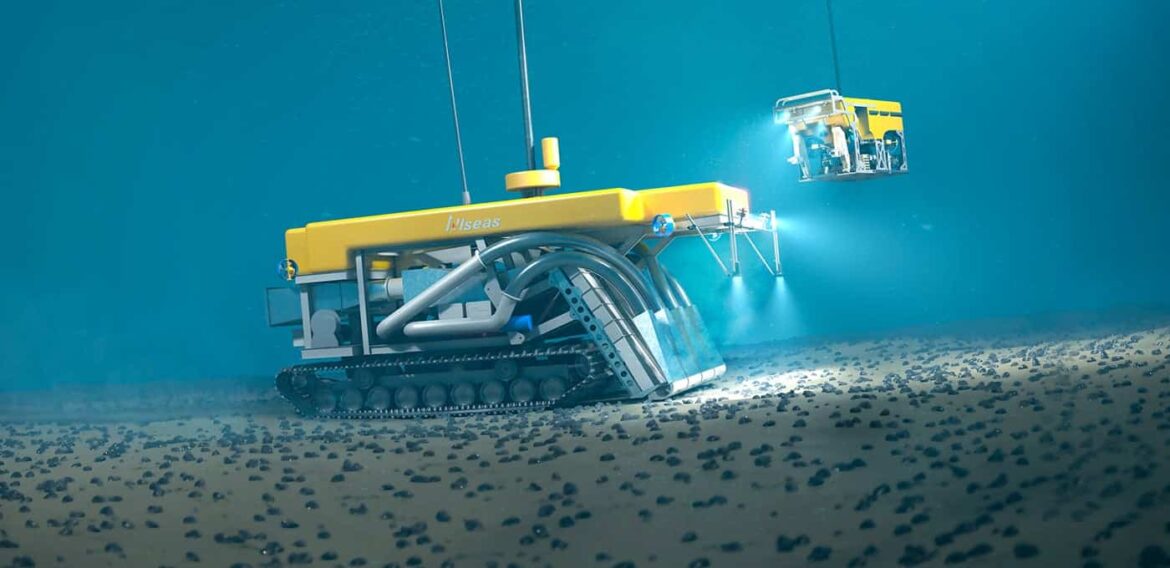 Artistic depiction. Image via Wikipedia.
Artistic depiction. Image via Wikipedia.
Japan is preparing to stir a sleeping world. The goal isn’t oil or gas — it’s mud. Mud that’s packed with the rare earth metals powering our digital and green future.
Starting in January 2026, Japan will become the first country to mine rare earth elements from deep-sea sediments at unprecedented depths of 5,500 meters. Using the Chikyu, a deep-sea scientific drilling vessel, researchers will target an area near Minamitori Island (1,900 kilometers southeast of Tokyo) and attempt to recover around 35 metric tons of rare-earth-rich mud.
Each tonne could yield about two kilograms of valuable elements: neodymium for electric vehicles, dysprosium for wind turbines, terbium and gadolinium for sensors and display tech. It’s a treasure trove for the green economy. But pulling it up from the ocean floor comes with big risks.
A New Gold Rush
China currently dominates the rare earth supply chain, refining nearly 90% of global output and mining over 60%. Given how important these rare earth elements are, and how tensions are spiking amid trade disagreements, many governments are scrambling for alternatives. In June, Japan joined the US, India, and Australia in an alliance aimed at securing these minerals and breaking China’s monopoly.
The problem with rare earths is that they’re usually spread very sparsely, rarely concentrated enough to make mining realistic. But one of the places where rare earth elements can be mined is the deep ocean.
This has triggered an unexpected, gold rush-type situations; and unsurprisingly there seems to be little concern for the environment.
The way this mining works is by lowering a specialized robotic system to the ocean floor, where it vacuums or scoops up sediment from the seabed. This mud is then pumped to the surface through a riser system, separating the valuable rare earth elements from the waste. However, the deep sea isn’t empty — it’s teeming with life.
Corals, brittle stars, worms, microbial mats, and delicate sponges thrive on and beneath the seabed, many of them newly discovered and found nowhere else. These ecosystems evolve over millennia. They don’t recover quickly — if at all. In fact, scientists have warned that Japan’s deep-sea mining “gold rush” could have severe consequences for the environment.
Scientists Sound the Alarm
In May, a group of marine scientists published a warning in Science. They urged Japan to halt its plans until environmental impacts are better understood. More than 30 countries, including Portugal, the UK, and Mexico, have already called for bans or moratoriums on deep-sea mining until regulations catch up.
A massive, industry-funded study released in July by Australia’s government science agency CSIRO showed why. After just a short test mining event in the Clarion-Clipperton Zone (CCZ) — an area in international waters between Hawaii and Mexico — bottom-dwelling creatures like sea cucumbers and crustaceans plummeted in numbers. Filter feeders, which rely on undisturbed sediment to survive, showed “minimal recovery” a year later.
Even apex predators weren’t spared. Simulations found that sharks and swordfish could absorb toxic metals from suspended plumes of waste — raising concerns not just for wildlife, but for human seafood consumption.
Japan’s current plan falls within its own exclusive economic zone. So, oversight from the ISA (International Seabed Authority) doesn’t apply. But its actions set a precedent. If Tokyo succeeds, it could open the floodgates for other nations — and companies — to dive headlong into the abyss.
Already, Canada-based The Metals Company is pushing for a license to mine polymetallic nodules in the CCZ by 2026. The firm has even indicated it could proceed without international approval, citing obscure U.S. laws from the 1980s.
A Turning Point for a Complex Situation
What makes this situation so tricky is that the double bind of the green transition. Even if you want to prioritize the environment (which is a big ‘if’ here), we need rare earth metals. They power electric cars, wind turbines, solar panels, and next-gen batteries. But the race to secure those resources threatens the very ecosystems that climate solutions are supposed to protect.
And, unlike land-based mining, which is heavily regulated and monitored (albeit imperfectly), deep-sea mining in international waters operates in a legal vacuum. The ISA, a United Nations affiliated body, is still finalizing rules on how such mining should proceed. And these rules have been delayed for years.
Above all this, the allure of untapped riches on the ocean floor towers. With no indigenous populations to displace and seemingly limitless mineral deposits, the deep sea is being framed as the final “clean” resource frontier. But this is far from a “clean” practice.
Japan’s 2026 trial will be watched closely — not just by mining companies and engineers, but by oceanographers, ethicists, and climate activists. Because when we mine the ocean floor, we’re not just scraping up mud, we’re erasing a page from Earth’s environment. And we don’t even know what we’re losing.


AloJapan.com